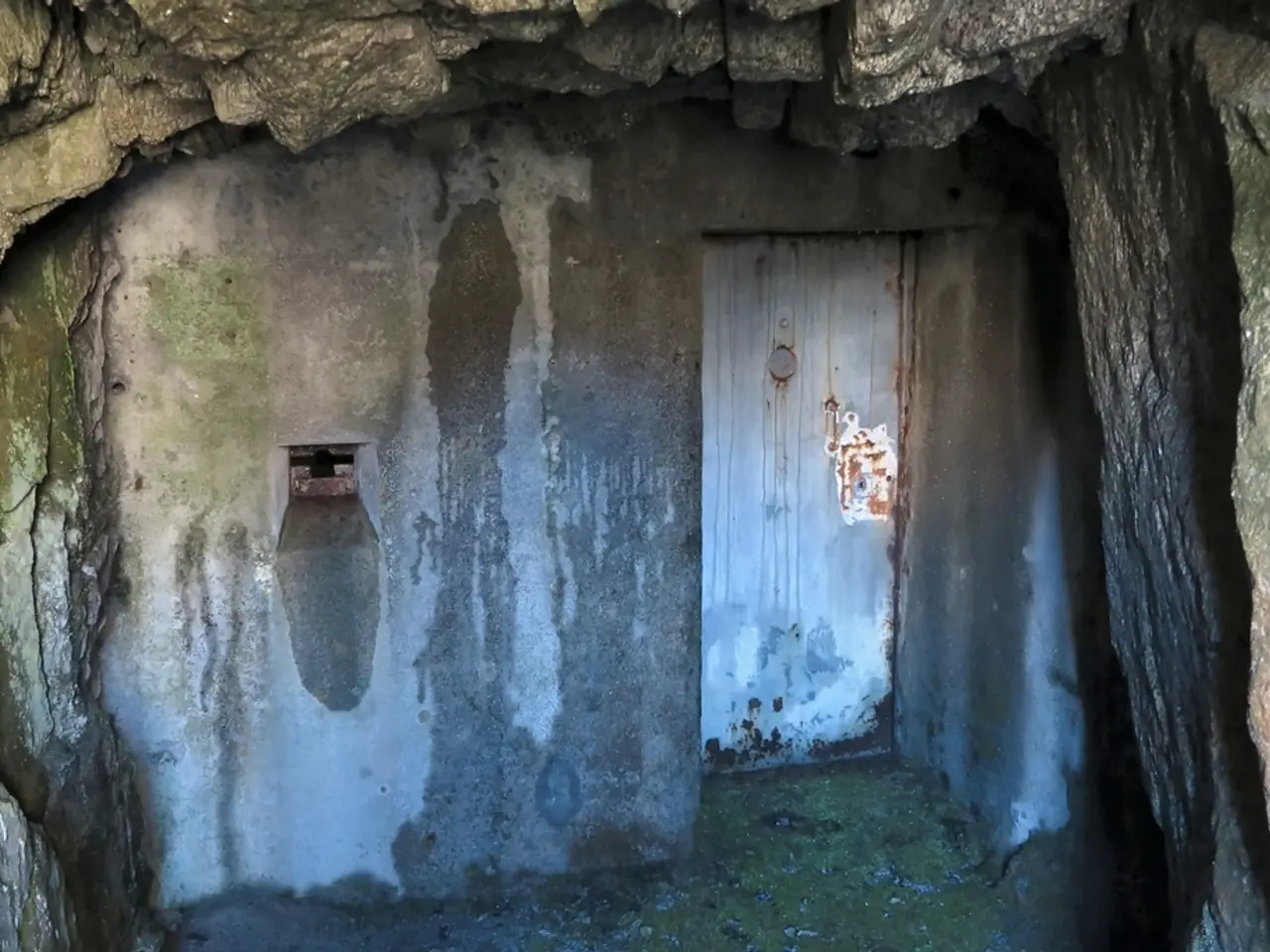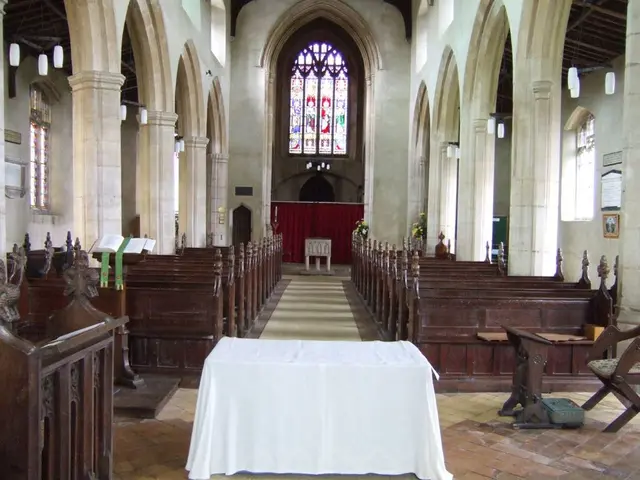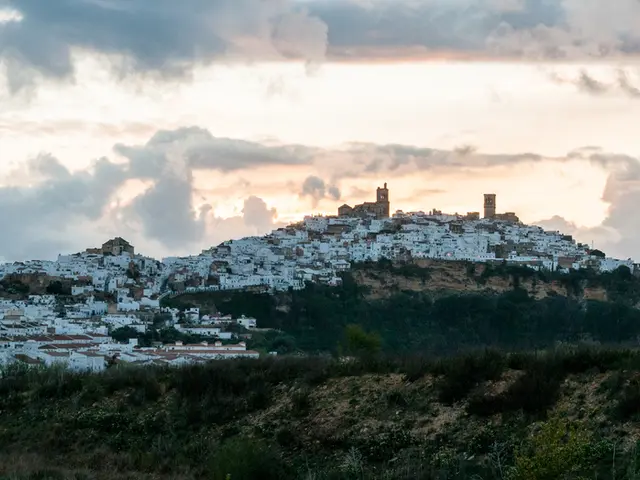A final peek into the dwindling underworld of cave-dwelling societies
In a world where modernity often dictates the pace of life, there are pockets of humanity that choose to step back in time and live in a more primitive, yet sustainable, way. One such example is the growing number of people who call underground homes their permanent residence.
One of the most significant populations residing underground can be found in China, where around 30 million people live in traditional yaodong homes, a figure that continues to grow. These homes, carved into the earth, offer insulation and a historical charm that has made them a popular choice for many. However, it's worth noting that the exact global figure of people living underground is not readily available, with the Chinese population alone representing a significant share [2][4].
Other instances of underground living are more associated with underground cities or structures that serve commercial or emergency purposes rather than permanent residences. For example, Helsinki's underground city is designed for emergency housing up to 600,000 people, but it is not regularly inhabited. Similarly, underground networks in places like Montreal serve as extensive pedestrian and commercial corridors but are not residential [4].
In Australia, the opal mining town of Coober Pedy offers a unique take on underground living. Many miners live in dugouts excavated from the hillsides to escape the extreme daytime temperatures [1]. One visitor, Tamara Merino, was captivated by this unusual way of life and spent a month in Coober Pedy, exploring its subterranean homes and churches [1].
The practice of humans living in caves dates back millions of years, and it continues to be a way of life for some today. In the hilltop town of Ortahisar, Turkey, the Torun family has lived in a cave home since their wedding day more than four decades ago. Their home, complete with plumbing and electricity, offers a warm living room in winter and a cool storage room for year-round food storage [1].
Similarly, in the Maloti mountains of Lesotho, a Basotho chief named Kome led his tribe to the cave at Ha Kome in the early 1900s. Over the past two decades, nearly everyone has moved to a cinder-block village constructed on the bedrock above the cave, but some still maintain temporary residences within the cave for various reasons [3].
In southern Tunisia, the Imazighen, also known as Berbers, have been chiseling their homes into the sandstone hillsides for thousands of years [1]. However, the Tunisian government has suggested moving these cave-dwellers into government-built housing aboveground, promising cheap running water and electricity. Yet, many who have relocated found that these promises were not fulfilled [3].
As we delve deeper into the subterranean world, we find a continuous lesson in sustainability and circular economy. Pietro Laureano, a climate-focused architect and UNESCO consultant, believes that these underground homes offer a unique perspective on living in harmony with nature [5].
In conclusion, while the exact global figure of people living underground is not readily available, it is clear that China's yaodong population of around 30 million represents a significant share. From the opal mines of Australia to the hilltops of Turkey and the sandstone hills of Tunisia, humanity continues to find innovative ways to adapt to its environment, living underground in a testament to our resilience and ingenuity.
References: [1] Merino, T. (2021). Underground Australia: The town where everyone lives in mines. BBC Travel. [2] Zhang, Y. (2017). China's yaodong homes: A sustainable way of life. CGTN. [3] Jones, S. (2019). Tunisia's cave dwellers: A way of life under threat. Al Jazeera. [4] Helsinki's Underground City. (n.d.). Visit Helsinki. [5] Laureano, P. (2020). Subterranean world: A lesson in sustainability. UNESCO.
- The resilience of humanity is evident in the growing number of people who choose to live in yaodong homes, carved into the earth, in China.
- Penguins, presumably from the ocean, may find the cool and insulated yaodong homes an intriguing sight, if they ever traveled to land.
- The practice of living underground is not a new phenomenon, with history showing cave dwellings dating back millions of years.
- The Imazighen, or Berbers, in southern Tunisia have chiseled homes into the sandstone hillsides, a testament to the adaptation of their ecosystems to the climate.
- As more people opt for a sustainable lifestyle, the concept of the opal mining town of Coober Pedy in Australia offers an unique travel experience for those seeking to explore alternative ways of living in harmony with nature.
- The Torun family in Ortahisar, Turkey, have maintained a cave home for over four decades, showcasing the resilience of certain communities in adapting to the environment.
- In the case of Helsinki's underground city, designed for emergency housing, there's a stark contrast to the permanent residences in yaodong homes and other subterranean dwellings.
- The ecological ecosystems of our planet, such as the oceans and forests, could take a note from the resilience and circular economy exhibited by underground living environments, promoting sustainability and travel that leaves a minimal impact on the environment.




